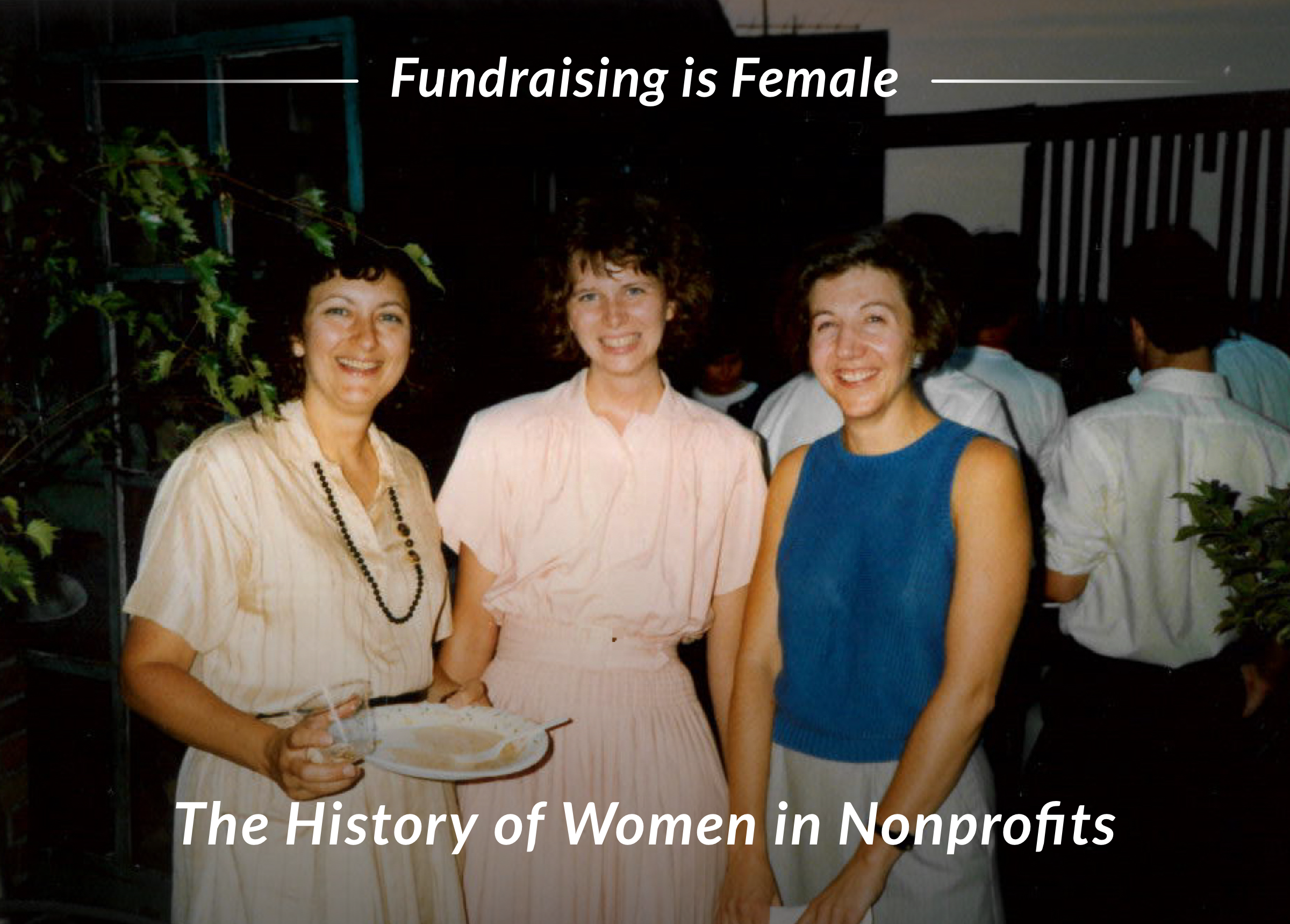Fundraising is Female: The History of American Women in Nonprofits

Before we had Women’s History Month, we had Women’s History Week, an observance championed by — you guessed it — a woman-led nonprofit!
Generally speaking, fundraising is a female-dominated profession… and it has been for centuries. In fact, women laid the groundwork for American philanthropy. Join us as we dig into fundraising’s inextricable ties to women, the barriers to equality women still face today, and where we go from here.
Origins
As early as the War of 1812, maybe even earlier, American women have been taking up the mantle of social good in their communities. When it became clear that male-dominated leadership wasn’t caring for communities in crisis, women organized — and stepped in. They mobilized to provide services like food and shelter to poor widows and orphaned children. It’s worth noting that many of the women behind these efforts were from religious organizations, like Catholic Charities of New York (one of our dear clients).
As you can imagine, social services were still largely considered “women’s work.” A 1985 study by Arlene Kaplan Daniels that followed 70 women volunteers in “high society” found that their work was often belittled or went unrecognized. Even so, the birth of the nonprofit sector opened space for women to access an alternative method of power and influence in their communities.
The sector began to grow in popularity even after wartime, as these (largely wealthy) women increasingly devoted their time to volunteering — and their pocketbooks to donating. As you can imagine, however, a woman’s giving was tied to her husband or family’s bank account, as women could not have their own in the US until the 1960s. And little thought was given in this space to addressing structural inequities. Their focus was on helping the poor and disadvantaged, not dismantling the systems that perpetuated inequity.
Changing Tides
The change and activism of the 1960s began to shift the way people engaged with philanthropic endeavors. At the same time, women were moving into the workforce in large numbers, gaining access to more of their own resources to pour into philanthropy — and lead these efforts themselves.
Today, (according to the 2020 Institute of Fundraising (IoF) report, “Missing Out: Understanding the Female Leadership Gap in Fundraising,”) 73% of professional fundraisers in the US are women.
Judy Maneval, Sanky’s president for 30 years, notes that “in all of the industry groups I’ve been part of and all the many conferences I’ve been to over the years, there has always been a strong representation of women in consulting.”
Problems Still Abound
And yet, perhaps unsurprisingly, there are still more men in leadership positions within nonprofit organizations.
The Institute of Fundraising found that “In the top 100 fundraising charities in the UK, there are 52 female directors of fundraising. Assuming — as we do — that talent is equally spread across the genders, this means there are more than 20 women missing from the leadership roles in the 100 biggest (and, arguably, most prestigious) charities.”
So, proportionally, there are far more men in leadership positions than there are women, even in fundraising. And the numbers are even lower for women of color in leadership roles; 89% of nonprofit CEOs and 80% of all board members are white.
The lack of women in leadership positions is a critical error. Organizations without the diversity of thought and experience necessary to achieve their missions miss countless opportunities to engage with donors — and the communities they serve.
Structural inequities that wind through our sector — and far beyond it — immediately come to mind. On that same note, the IoF reports that “the main barrier that women experience in realizing their leadership ambitions is the availability of broad flexibility in relation to hours and working patterns.”
Moving Forward
This barrier to leadership is one of the reasons Sanky now offers such flexibility in our workdays. When the pandemic hit, we pivoted to a fully remote model, which worked well for quite a lot of us. Now, some folks work fully remotely, while others choose to come into our shared workspace in Midtown Manhattan a few days a week. Vice President of Strategic and Business Development Cathy Carley says, “The flexibility that Sanky has provided has allowed me to do the work that I am passionate about and prioritize my family.”
The IoF reports other key factors that would help advance the number of women to leadership positions: the support of a mentor, offering ample training opportunities, visible role models of women in fundraising leadership, diverse leadership teams, and instilling a real sense of trust in someone while they do their job.
It’s certainly easier said than done, given the structural inequities that run deep within our industry. We know there’s a lot more work to do. But we at Sanky are always learning, always listening for ways to improve our culture, and always striving to create more social good — both inside and outside of our company.

